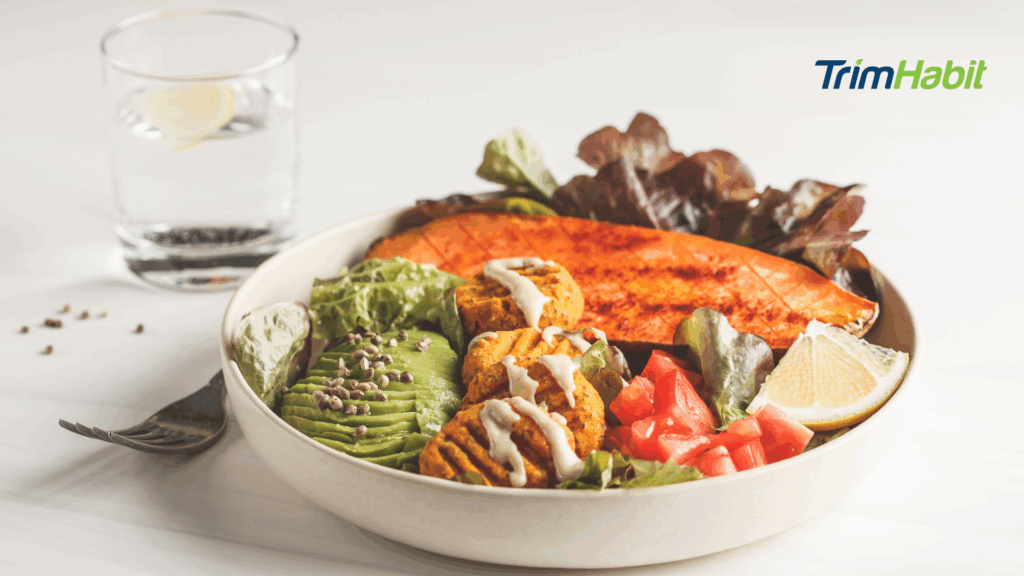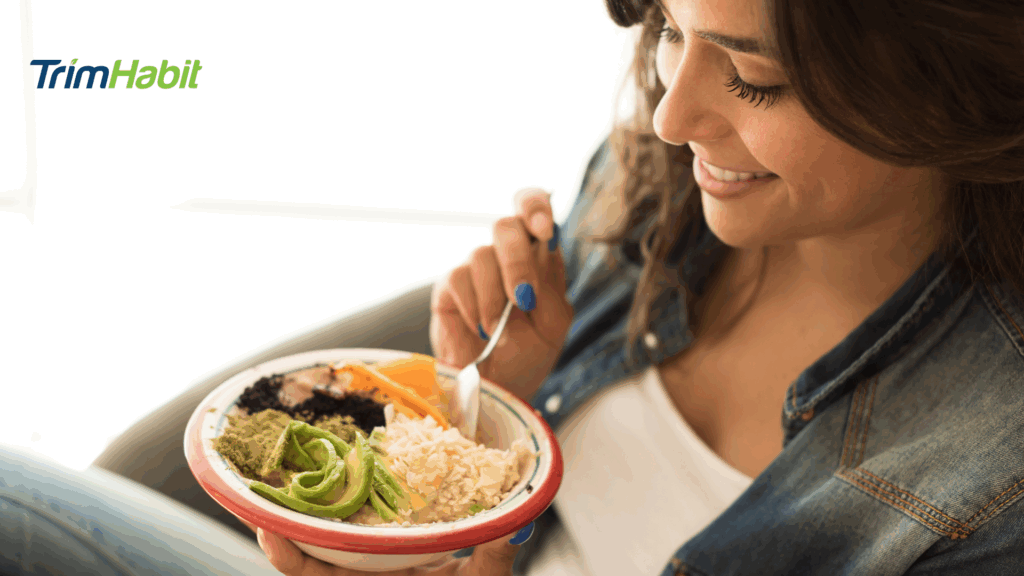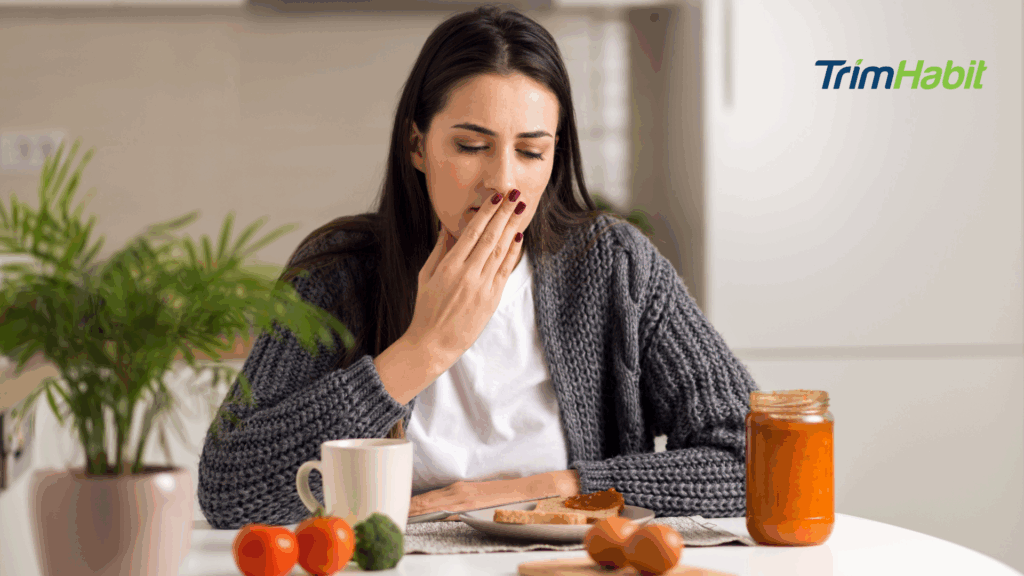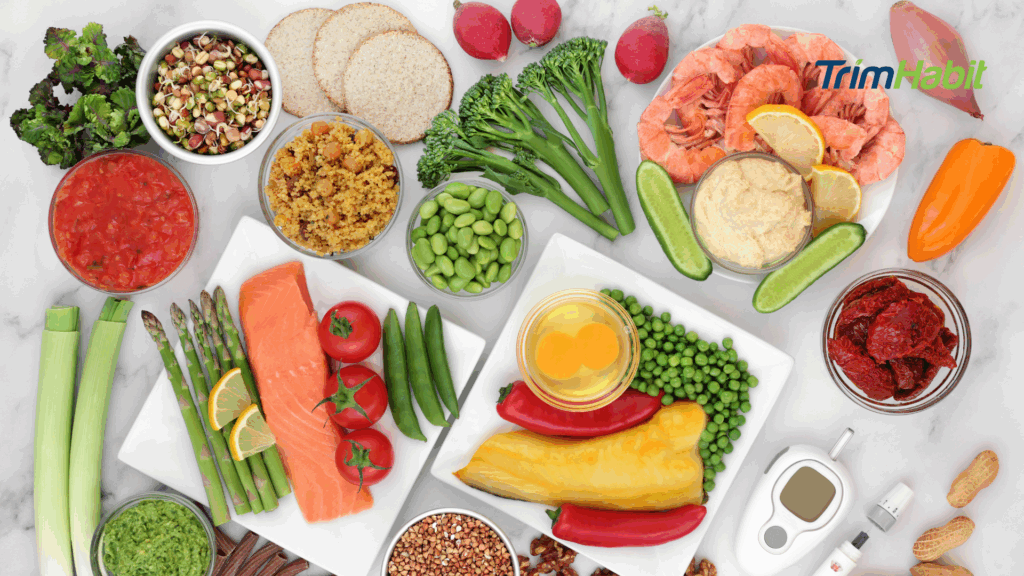Balancing satiety and calorie intake is vital to successful weight loss. In the journey towards achieving your health goals, discovering suitable dinner options can make all the difference.
This article delves into a range of the most filling dinner foods with lowest calories for weight loss. You’ll discover the art of enjoying delicious meals while staying dedicated to your goals, and gain insights into optimizing your evening dinners for both satisfaction and continued weight loss progress.
Understanding The Importance Of Low-Calorie Dinner Meals
In today’s fast-paced world, where convenience often takes precedence, the significance of maintaining a balanced and healthy diet cannot be overstated. Among the various elements of a well-rounded diet, low-calorie dinner meals are a cornerstone of promoting overall health and well-being.
As the last meal of the day, dinner is crucial in providing the body with essential nutrients while influencing sleep patterns, metabolism, and weight management.
Recognizing the impact of low-calorie dinner options goes beyond counting calories; it involves understanding the intricate relationship between nutrition, energy consumption, and the body’s natural rhythms. Let’s go further in understanding why embracing low-calorie dinner choices can contribute to a healthier lifestyle. Additionally, we’ll shed light on practical strategies for effectively implementing this approach.
Benefits of Low-Calorie Dinner Meals
- Weight Management: Frequent consumption of high-calorie meals in the evening can lead to weight gain over time. Choosing low-calorie dinner options helps control calorie intake, preventing overconsumption and supporting weight management goals.
- Improved Sleep: Heavy meals before bedtime can disrupt sleep patterns and cause discomfort. Opting for lighter, nutrient-dense dinners can promote better sleep quality and reduce nighttime disturbances.
- Enhanced Metabolism: The body’s metabolic rate tends to slow as the day progresses. Consuming a lower-calorie dinner can assist in keeping the metabolism functioning optimally and aid digestion.
- Blood Sugar Control: High-calorie meals, especially those rich in refined carbohydrates, can cause rapid spikes and crashes in blood sugar levels. Low-calorie dinner choices emphasizing lean proteins, whole grains, and vegetables which can help stabilize blood sugar levels.
- Heart Health: Low-calorie dinners often include heart-friendly ingredients, such as lean proteins, healthy fats, and fiber-rich vegetables. These elements contribute to maintaining cardiovascular health and reducing the risk of heart-related issues.
Practical Strategies for Implementing Low-Calorie Meal
- Balanced Portions: Focus on portion control by using smaller plates and bowls. This can visually make your meal seem more substantial while keeping the calorie count in check.
- Lean Proteins: Incorporate lean protein sources like grilled chicken, fish, tofu, or legumes into your dinner. Protein helps you feel full and satisfied without the excess calories.
- Vegetable Emphasis: Make vegetables the star of your dinner plate. They’re low in calories and high in fiber, vitamins, and minerals, providing essential nutrients without contributing to excess calorie intake.
- Whole Grains: Choose whole grains like quinoa, brown rice, or whole wheat pasta over refined grains. These provide sustained energy and additional nutrients.
- Mindful Eating: Eat slowly and mindfully, allowing your body to recognize when you’re full. This can prevent overeating and encourage better digestion.
- Hydration: Opt for water or herbal tea as your beverage choice during dinner. Sugary or calorie-laden drinks can add unnecessary calories.
Very Low-Calorie Diets: What You Need To Know
Typically, a low-calorie diet involves a daily intake ranging from 800 to 1,500 calories. For some individuals seeking rapid weight loss, a very low-calorie diet can be an option.
Very low-calorie diets often consist of 800-calorie or fewer regimens that substitute all regular meals. Alternatively, some diets, like the popular grapefruit diet, emphasize consumption of familiar low-calorie foods.
It’s important to distinguish low-calorie diets from approaches that involve replacing a meal or two each day with over-the-counter meal replacements.
How Effective Are Very Low-Calorie Diets?
If your body mass index (BMI) is over 30, you may be able to lose between 3 and 5 pounds per week on a very low-calorie diet. This would be an average of 44 pounds lost over 12 weeks.
Diabetes, high blood pressure, and high cholesterol can all be caused by being overweight. If you lose that much weight, you may be able to get better medical care for these diseases. But in the long run, diets with very few calories don’t work better than diets with more calories. When you stop a diet, you must change your whole lifestyle by committing to healthy eating and frequent exercise.
Are Very Low-Calorie Diets Safe?
It’s important to note that not everyone is suited for a low-calorie diet. Consult your healthcare provider to determine the appropriateness of such a regimen for you.
For individuals with a BMI exceeding 30, very low-calorie diets can generally be considered safe when supervised by a medical professional. Those with a BMI between 27 and 30, categorized as overweight but not obese, should only embark on very low-calorie diets if they’re dealing with weight-related health issues and are under the guidance of a healthcare expert.
It’s imperative to understand that pregnant or nursing women should avoid very low-calorie diets, and children or teenagers should refrain from using them unless part of a specialized treatment program. Additionally, for individuals aged 50 and above, the decision to adopt such diets should factor in their existing medical conditions and medication requirements, as well as any potential side effects.
Most Filling Dinner Foods With Lowest Calories For Weight Loss
Finding a straightforward, low-calorie filling dinner can make a big difference when you need to get fed on the table quickly but also want to keep your health goals in mind. But on a low-calorie diet, you must ensure you get enough calories to feel energized and give your body the fuel it needs. Here are the dinner foods with the fewest calories that will make you feel full:
Oats
Oats, high in fiber and protein, help stop hunger, make you feel fuller, and make it easier to control your appetite1,2,3.
Greek Yogurt
Greek yogurt has a lot of protein and has been linked to feeling less hungry, eating fewer calories, and feeling fuller4,5,6.
Berries
Berries have a lot of fiber and pectin, which slow down how fast your stomach empties and make you feel full7,8,9,10.
Eggs
Eggs are a great meal choice because they are low in calories and full of protein11,12,13,14. Having eggs for dinner can help meet your protein needs while keeping your calorie intake in check.
Popcorn
Popcorn has a lot of fiber, which can help slow down digestion and keep blood sugar levels stable. It also makes you feel fuller and less hungry than other snacks15,16.
Chia seeds are full of soluble fiber, making you feel full all day17,18. Chia seeds can help control your appetite and can be particularly beneficial for those aiming to manage their calorie intake and support weight loss goals.
Fish
Fish has a lot of protein, making you feel fuller and decreasing your hunger19,20. With its high protein content, incorporating fish into your meals can help regulate your appetite and curb excessive snacking.
Potatoes
Despite their association with high-fat foods like French fries and potato chips, potatoes themselves can play a crucial role in a filling dinner. Packed with carbohydrates, fiber, and essential nutrients, they have the capacity to keep you full and satisfied21,22,23.
Lean Meat
Lean meats are high in protein, have the potential to decrease calorie consumption and curb hunger24,25,26. Their protein content not only provides essential nutrients but also contributes to a feeling of fullness and satisfaction, making them a valuable addition to your dinner.
Legumes
Another high protein and fiber content food, legumes such as beans, peas, and lentils can be incredibly filling. Having these foods can create flavorful dishes such as soups, stews, salads, curries, and dips.
Low-Calorie Meal Ideas
Here’s a collection of meal examples, all thoughtfully designed to fit within the 400-calorie range while delivering delicious flavors.
- Harissa Fish with Bulgur Salad
Spice up cod pieces with harissa paste and serve them with a grain salad for a quick and easy dinner.
- Spicy Meatballs with Chili Black Beans
This recipe for ground turkey, black beans, and avocado burgers is low in fat, calories, and glycemic index (GI).
- Egg-fried Noodles with Beansprouts
When you’re hungry, a quick-to-make noodle dish can save the day. This dish has bean sprouts, whole-wheat noodles, low-sodium soy sauce, and eggs, which are full of protein. You can enhance the flavor with a touch of lemon juice, though it’s completely up to you whether to include it or not.
- Cauliflower, Paneer & Pea Curry
Whipping up in under an hour, this uncomplicated vegetarian curry recipe features pan-fried Indian cheese and vegetables. Not only is it budget-friendly, but it also boasts a wholesome and nutritious profile.
Tips For Making The Most Of Your Calories
In a world driven by calories, making the most of them is crucial. Here are some tips to assist with managing your calorie intake:
- Don’t skip the protein.
At every meal, try to eat some protein. Protein makes you feel full and helps your body burn fat. Studies show that protein speeds up the rate at which your body burns calories27,28,29.
- Don’t drink your calories.
Water is the best thing to drink if you want to lose weight. Keeping yourself hydrated will help you lose weight. Avoid drinks like soda, fruit juice, sports drinks, and booze high in sugar.
- Dump the junk.
Indulging in occasional cravings is alright, but establishing it as a routine isn’t advisable. “Empty calories” is the term used for the calories found in unhealthy foods. This is because they don’t provide your body with any essential nutrients. Moreover, they fail to offer lasting satisfaction. It’s wise to consider reducing or eliminating these from your diet.
- Watch your carbs.
Carbohydrates come in two forms: simple and complex, commonly referred to as carbs. Opting for complex carbs such as vegetables, potatoes, and whole grains is a healthier choice. On the flip side, simple carbs, also known as refined carbs, encompass items like white bread, white rice, sugary foods, and processed snacks. While fruits fall into the category of simple carbs due to their natural sugars, they offer valuable nutrients and are a wholesome part of a balanced diet. Remember to watch your carbohydrate intake for better control.
The Bottom Line
In a nutshell, these dinner heroes are your ultimate allies in the thrilling journey of shedding those pesky pounds! As you progress into your weight loss journey, embracing the most filling dinner foods with the lowest calorie counts becomes your secret weapon. These culinary delights not only tantalize your taste buds but also set the stage for a slimmer, healthier you.
So go ahead, stack your plate with these power-packed choices, because weight loss doesn’t have to be about deprivation. It’s about savoring every moment and every morsel while inching closer to your goals. With the right dinner selections, not only are you bidding farewell to excess calories, but you’re also welcoming a more vibrant, confident version of yourself, poised to conquer the world – one delightful bite at a time!
Citations
12 Vander Wal JS, Marth JM, Khosla P, Jen KL, Dhurandhar NV. Short-term effect of eggs on satiety in overweight and obese subjects. J Am Coll Nutr. 2005 Dec;24(6):510-5. doi: 10.1080/07315724.2005.10719497. PMID: 16373948.









